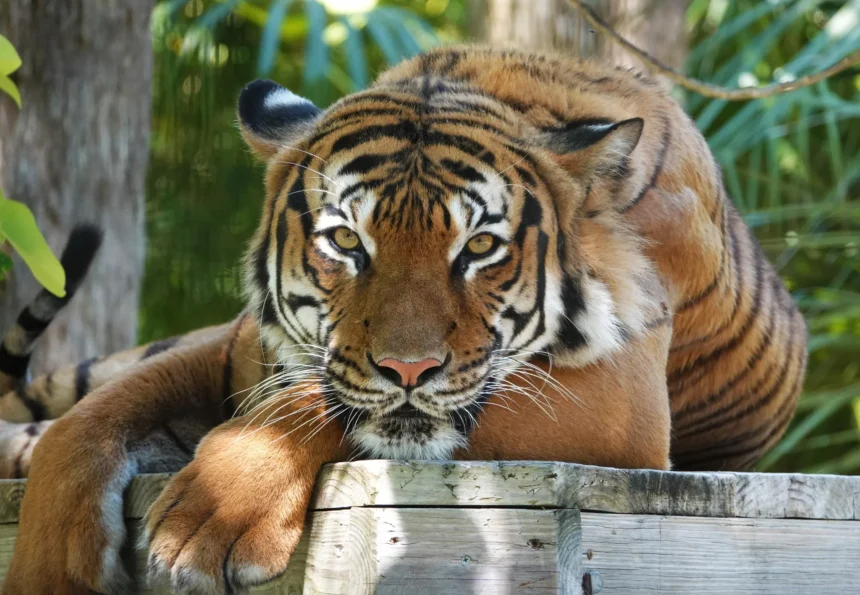The recent news about the phoenix zoo tiger killed has left many shocked and heartbroken. This incident not only raises questions about animal safety but also compels us to reflect on our relationship with wildlife. Tensions between protecting these majestic creatures and providing them a safe environment are more real than ever. In this article, we will delve deeper into what happened, explore the implications of such incidents, and discuss how we can support animals affected by similar tragedies. Join us as we take a closer look at the circumstances surrounding the phoenix zoo tiger killed—a topic that resonates deeply with animal lovers everywhere.
The phoenix zoo tiger killed: A Guide
The recent incident phoenix zoo tiger killed has sparked widespread concern. Understanding what happened can help clarify the situation.
This particular tiger was part of a comprehensive conservation program. The zoo aimed to educate visitors about these magnificent creatures and their natural habitat.
Details surrounding the event are still unfolding, but reports indicate it was an unexpected occurrence during feeding time. Witnesses described a chaotic scene that left many in shock.
Zoological staff trained to handle emergencies responded swiftly to ensure safety for both animals and visitors alike. Their quick actions likely prevented further complications.
As this story develops, it’s essential to stay informed through reliable sources. Awareness is crucial in understanding animal welfare issues and supporting better practices across zoos nationwide.
Where Did the phoenix zoo tiger killed?
The tragic incident involving the phoenix zoo tiger killed took place within its expansive grounds. The zoo is home to diverse wildlife, making it a popular destination for families and animal lovers.
This particular event unfolded in an area designated for big cats. Visitors might have been nearby, unaware of the unfolding situation.
The Phoenix Zoo aims to educate the public about conservation efforts and animal behavior. However, incidents like these raise questions about safety protocols in zoos.
Enclosures are designed with security measures intended to protect both animals and visitors. Yet, sometimes unforeseen circumstances can lead to devastating outcomes.
Witnesses reported confusion as staff acted swiftly during the crisis. Their focus remained on ensuring visitor safety while also addressing the welfare of other animals nearby.
10 Reasons Why a phoenix zoo tiger killed
The recent incident of phoenix zoo tiger killed has raised numerous questions about animal safety and welfare. Understanding why a tiger was killed is essential for learning and prevention.
One reason could be habitat encroachment. As human populations grow, animals lose their natural homes, leading to increased conflict.
Another factor is stress in captivity. Animals might exhibit unpredictable behavior when overwhelmed by their environment or caretakers.
Improper training methods can also contribute to dangerous situations. If zookeepers are not adequately trained, the risk escalates dramatically.
Health issues can lead to aggression as well. A sick animal may act out due to pain or discomfort.
Public safety concerns often dictate drastic measures when an animal poses a threat to visitors or staff. These decisions are never easy but sometimes deemed necessary amidst chaos.
How to Support Animals Affected by a phoenix zoo tiger killed
Supporting animals affected by the tragedy of the phoenix zoo tiger killed is crucial. First, consider donating to local animal welfare organizations. These groups often provide resources for rehabilitation and care.
Volunteering your time can also make a significant impact. Many shelters and wildlife rescues need hands-on help — whether it’s feeding, cleaning, or simply offering companionship to distressed animals.
Educating others about wildlife conservation plays a vital role too. Share information on social media or organize community discussions that raise awareness about the challenges faced by zoo animals.
Additionally, advocate for stricter regulations regarding animal safety in zoos. Engaging with local lawmakers can lead to meaningful change that protects other animals from similar fates.
Adopting pets from shelters offers homes to those who have suffered loss or trauma in their lives. Each action counts when it comes to supporting our furry friends during difficult times.
Top 10 Facts About the phoenix zoo tiger killed
The tragic incident involving the Phoenix Zoo tiger has captured widespread attention. Here are ten important facts that shed light on this heartbreaking event.
First, the tiger was a beloved resident of the zoo for several years. Visitors often marveled at its grace and beauty.
Second, it was part of an endangered species program aimed at conservation efforts. This highlights the significance of every animal in such initiatives.
Third, authorities quickly launched an investigation to determine how this tragedy occurred. Transparency is vital for public trust.
Fourth, eyewitness accounts provided varied perspectives on what happened leading up to the event.
Fifth, many local wildlife experts have expressed their condolences and concerns regarding animal safety protocols in zoos across America.
Sixth, social media reactions have ranged from outrage to sorrow as people process their grief over losing such a magnificent creature.
Seventh, donations poured into wildlife funds following news of this incident, reflecting people’s passion for protecting animals.
Eighth, educational programs about tigers and conservation will be emphasized more than ever post-incident.
Ninth, discussions around habitat preservation gained momentum as communities focus on wild populations facing threats globally.
Tenth, memorials honoring the tiger were spontaneously organized by compassionate visitors who wanted to celebrate its life.
Conclusion
The recent tragedy surrounding the phoenix zoo tiger killed has profoundly impacted both animal lovers and the broader community. The loss of such a magnificent creature highlights not only the fragility of wildlife but also raises important questions about how we care for them in captivity.
Understanding the circumstances and implications behind this incident encourages a deeper dialogue on animal welfare and conservation efforts. As advocates, supporters, and concerned citizens, it’s essential to learn from these events to help prevent future tragedies.
By supporting local zoos that prioritize ethical practices or contributing to wildlife conservation organizations, each individual can make a difference. Awareness is key; education helps foster compassion towards all animals. This event serves as a call to action for us all—let’s ensure that our voices are heard when it comes to protecting those who cannot speak for themselves.
Let’s work together towards creating a safer environment for every living being in our ecosystems, ensuring they thrive rather than merely survive in our shared world.




